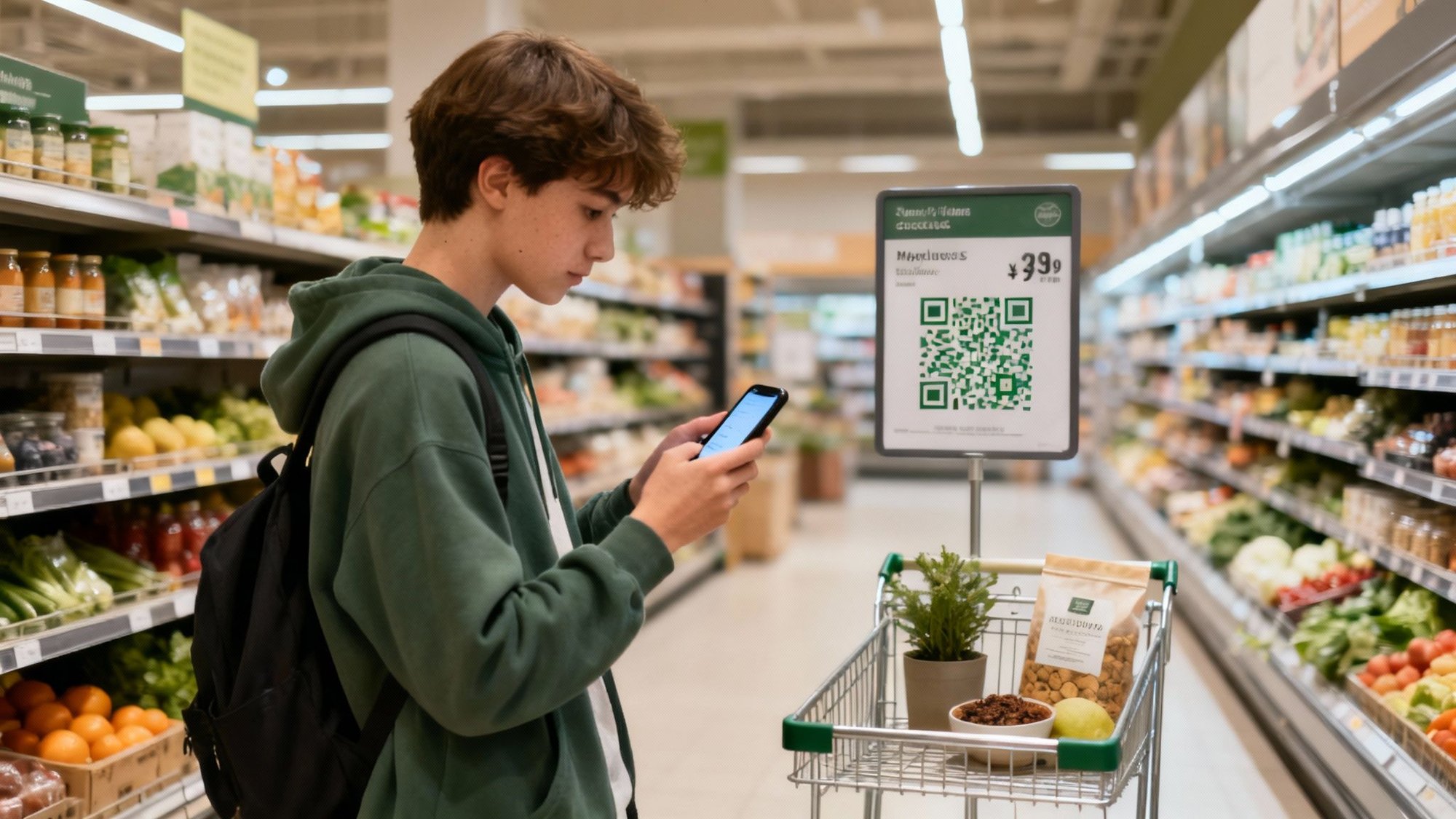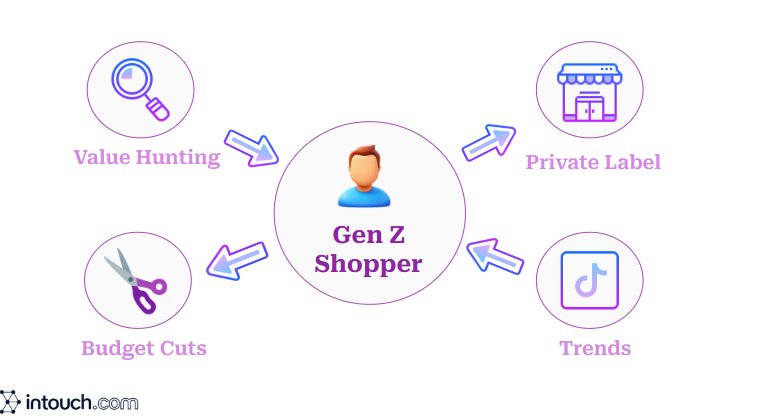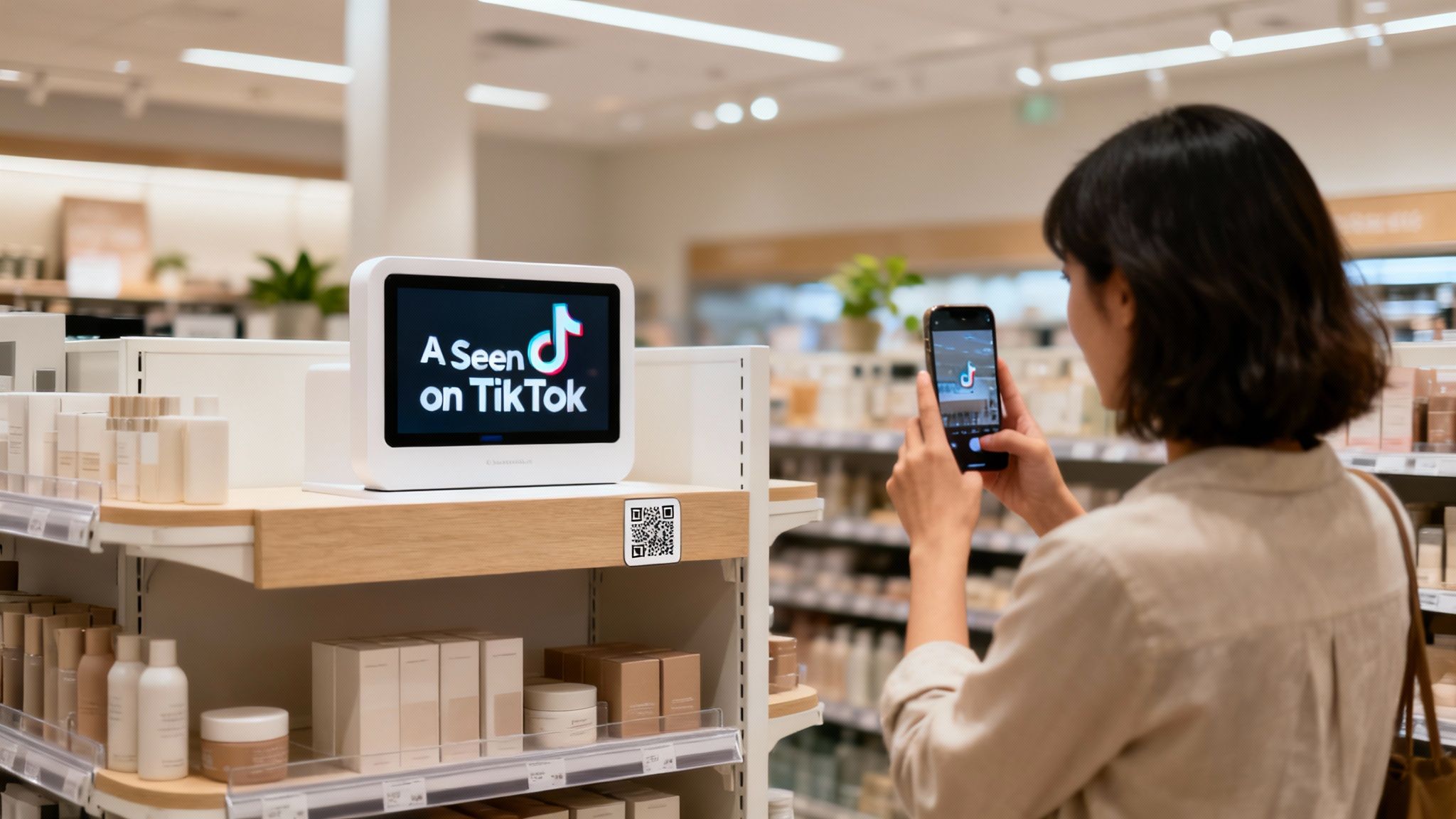

To understand Gen Z's grocery habits, you have to look at a unique mix of extreme value-seeking and a deep desire for digitally-savvy, purposeful brands. This generation doesn't treat a trip to the supermarket as a routine chore. Instead, it’s an extension of their online world, where TikTok trends, sustainability, and affordability all collide to decide what actually makes it into their physical cart.
For Gen Z, grocery shopping begins on social media, with aisles serving as the final stop. Born between 1997 and 2012, this group is reshaping the strategies of CPG brands and retailers. Their upbringing amidst economic uncertainty and digital connectivity has refined their ability to seek value, balancing price, quality, ethics, and social proof. This approach surpasses traditional marketing and coupon-clipping.
According to The Feedback Group, Gen Z's shopping behavior has changed considerably, as only 8% of them chose traditional supermarkets for their most recent grocery purchase.
So where are they going? They’re heading straight for discount retailers. 22% recently shopped at Walmart and another 22% at Aldi, proving that price is still king. You can learn more about how younger shoppers are choosing discounters and what it means for the grocery industry, Brands must justify expenses by not only being affordable but also offering quality, health benefits, or a brand story that aligns with consumer values.

Understanding these differences is essential for CPG brands to remain relevant, as broad demographic marketing fails with a generation seeking authenticity and a personal touch. Here's what this means for brands.
Gen Z prefers TikTok, Instagram, and peer recommendations, valuing genuine user-generated content over advertisements.
Brands should integrate in-store media with online trends using QR codes, Smart Shelves, and digital screens.
This generation seeks value by balancing low prices, high quality, and private-label brands, demonstrating skill in finding deals.
Brands should offer appealing private-label options and communicate value clearly at the point of sale to gain their loyalty.
Gen Z exhibits low brand loyalty unless a brand genuinely emphasizes sustainability or ethics, often switching brands to align with their values. It's crucial for brands to communicate their purpose clearly through packaging and in-store signage
To grasp Gen Z's grocery shopping habits, consider the impact of their economic reality. Raised in financial instability and rising inflation, they manage finances by being value seekers. They carefully calculate price, quality, and utility to maximize their dollars while maintaining quality and health.
The economic climate has drastically changed how people buy essentials, with 34% of Gen Z shoppers reducing grocery spending due to inflation, showing their sensitivity to price changes, You can dig into more data on this in a comprehensive report on shifting consumer habits.
Gen Z's approach to saving is methodical, blending traditional methods with modern technology for maximum value. It focuses on smart planning rather than mere thriftiness.
Key strategies include:
This is about resourcefulness, with pride in stretching their budget effectively.
Gen Z prioritizes both price and values. They seek healthy ingredients and brands with a purpose but aim to avoid overspending. This results in a shopping pattern where they might opt for premium, sustainably sourced items while also purchasing budget-friendly staples. Retailers can attract these consumers by offering a mix of private-label products and mission-driven brands, recognizing that a grocery cart reflects both budget and identity.
For Gen Z, the line between digital browsing and in-store shopping has disappeared. Their purchasing process is a seamless loop between online and physical spaces—this is the phygital reality.
Separating online and offline strategies doesn't work. A TikTok trend can immediately impact their purchases. They create shopping lists via apps at home and expect a tech-savvy checkout in-store.
Today's Gen Z grocery shopping merges online discussions about sustainable snacks with in-store searches, prompting retailers to integrate their physical and digital strategies.
As Gen Z gets better at mixing their online and in-store worlds, tools that make it easier are becoming essential. For example, think about how an AI-powered Instacart grocery list guide can turn a moment of digital inspiration into an organized, actionable shopping plan, simplifying their entire process from planning to purchase.
This infographic highlights Gen Z's balance between seeking value, adhering to a budget, Following Trends and choosing private labels.

What this shows us is that while their journey might start online, the final decision often comes down to the practical, economic reality they face right there in the store.
To engage with this generation, your physical store should mirror their digital life. A disconnected in-store experience is outdated. The aim is to create an ecosystem where every touchpoint—screen or shelf—feels seamless. You can see How Can www.intouch.com Help Retailers in this thing
Amid economic challenges, Gen Z shoppers look beyond just low prices. They consider a product's value in terms of ethics, environmental impact, and social commitments, influenced by their information access and global issue awareness. This generation is willing to spend more on brands that match their values, viewing shopping as a way to express themselves and support their beliefs.
For consumer brands, mission statements are as crucial as marketing budgets. Gen Z is quick to detect insincerity and demands genuine transparency and proof:
Unilever exemplifies this by integrating sustainability into its core identity, appealing to younger consumers and demonstrating sound business practice.
Having strong values is essential, but effectively conveying them at the point of purchase is critical. This doesn't require a costly overhaul; small, genuine touchpoints can make a big difference.
For retailers and brands, creating a purpose-driven brand strategy that resonates in-store is key. The physical aisle is where your brand’s values can either connect or fade away. Ensure your values are clear and noticeable.
Focus on connection, not boasting. When Gen Z shoppers compare products, the one clearly communicating its positive impact is likely to earn their purchase, even at a higher price.

Understanding Gen Z's grocery shopping habits is one thing, but applying that knowledge in-store is another. Traditional methods like static posters aren't enough for this generation. To capture their interest, stores need to become media-rich environments that connect their digital and physical experiences. Gen Z seeks interaction with a product's story, social proof, and tangible rewards for their attention. Shift from passive advertising to active engagement, turning every shelf and screen into a connection opportunity.
First things first: your physical store is a powerful media channel. Big players like Kroger Precision Marketing and Walmart Connect are already showing how to monetize retail ,It's no longer just about selling ad slots; it's about enhancing the shopping experience. Rethink in-store digital screens as interactive canvases rather than TVs. Instead of looping generic ads, display real-time social proof that appeals to Gen Z.
In a market saturated with promotions, generic discounts often fade into the background. Effective strategies involve an authentic value exchange, offering something genuinely useful or personalized. A 10% off coupon seems transactional, but a personalized digital offer at the shelf feels like a discovery.
This approach surpasses paper coupons by using in-store media for precise offers. For instance, a screen in the dairy section might show an oat milk discount to someone who previously bought plant-based items, with data being key to this targeting.
A digital-first in-store media strategy allows precise measurement of its impact, unlike traditional print signs that offer little reliable data. Modern platforms use a closed-loop attribution model to directly link ad exposure to sales.
With an intelligent network like Intouch.com, retailers and CPG brands can finally get answers to the big questions:
This data-focused method turns in-store marketing into a measurable revenue source. By tracking metrics like sales uplift and product penetration in real time, brands can adjust campaigns instantly, ensuring optimal spending. This strategy aims to create a smarter, accountable retail space that resonates with the new generation of consumers.
Ready to put these ideas into action and see real results? The Intouch.com AI-driven in-store media network is built to connect with Gen Z shoppers right at the shelf, turning those moments of engagement into sales. Find out more at https://www.intouch.com.